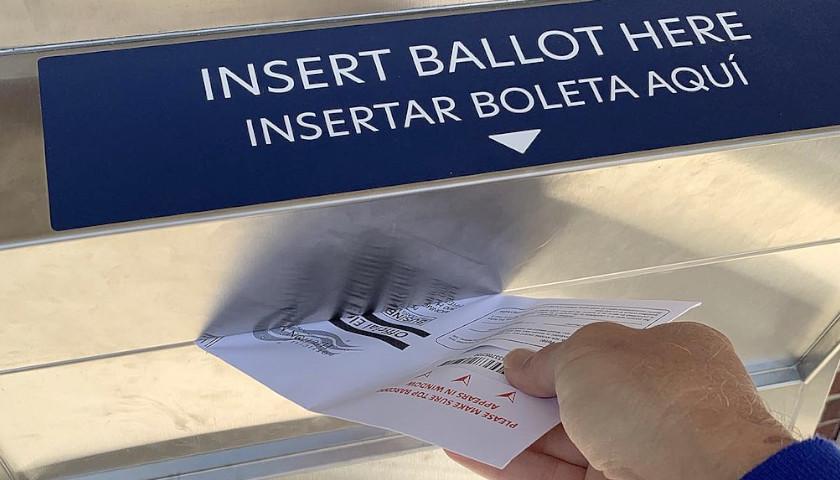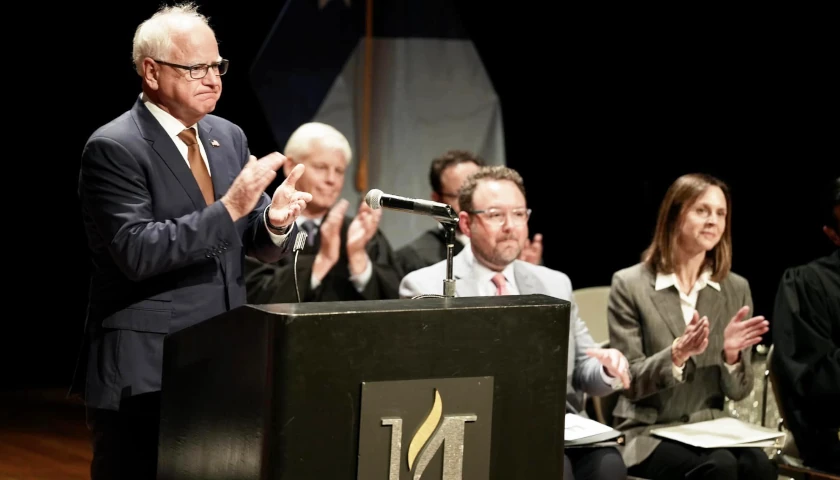by John Fund and Hans von Spakovsky
Many states are now sending out mail-in ballots for the November election.
Yet at the same time that so many more voters are depending on the mail to cast their ballots, the two leading national organizations of election officials wrote the U.S. Postal Service demanding immediate action to avoid confusion and chaos with mail-in ballots.
“We implore you to take immediate and tangible corrective action to address the ongoing performance issues with USPS election mail service,” wrote the National Association of State Election Directors and the National Association of Secretaries of State. “Failure to do so will risk limiting voter participation and trust in the election process.” According to the U.S. Election Assistance Commission, mail-in ballots accounted for 43% of the electorate in 2020, a 20-percentage point increase from 2016.
 The letter’s list of problems should alarm anyone thinking of voting through the mail instead of going to their polling place to vote in-person. That includes USPS staff nationwide who “are uninformed about USPS policies around election mail,” resulting in “significantly delayed, or otherwise improperly processed” absentee ballots. “Timely postmarked ballots” are being received “10 or more days after postmark,” demonstrating USPS’s “inability to meet their own service delivery deadlines.”
The letter’s list of problems should alarm anyone thinking of voting through the mail instead of going to their polling place to vote in-person. That includes USPS staff nationwide who “are uninformed about USPS policies around election mail,” resulting in “significantly delayed, or otherwise improperly processed” absentee ballots. “Timely postmarked ballots” are being received “10 or more days after postmark,” demonstrating USPS’s “inability to meet their own service delivery deadlines.”
This letter follows a July report from the USPS’s own Inspector General, which warned that its audit of primaries in 13 states found that 2.99% of mail-in ballots reached voters too late and 1.83% were returned to election offices after their legal deadlines. Its list of horror stories included the discovery that “local management at one facility stated they were not aware primary Election Day was that week.”
That means that almost 5% of voters are being disenfranchised, which amounts to hundreds of thousands of votes across the country.
There are reports of other nightmares. Kansas Secretary of State Scott Schwab is “extremely concerned” that in the August primary, 2% of ballots sent by mail were not counted “due to USPS administrative failures.”
“The Pony Express is more efficient at this point” said Schwab.
In July, Utah had a photo-finish Republican congressional primary where the victory margin was 176 votes. But nearly 1,200 mail-in ballots were not counted because they were first sent to a Las Vegas distribution center and not postmarked on time. Most of those ballots were in a county that was carried two-to-one by the candidate who ultimately lost.
The Public Interest Legal Foundation has sued Nevada officials for failure to fix obvious errors on the voter rolls. The organization has found hundreds of questionable voter addresses that include strip clubs, casinos, bars, vacant lots, gas stations, and fast-food restaurants. “Nevada’s policy of automatically mailing a ballot to every active registered voter makes it essential that election officials have accurate voter rolls and are not mailing ballots to addresses where no one lives,” PILF notes.
PILF points out that in 2022, Nevada’s U.S. Senate race was decided by 7,928 votes, which determined party control of that body. The Secretary of State, PILF noted, “published figures showing that 95,556 ballots were sent to undeliverable or ‘bad’ addresses and another 8,036 were rejected upon receipt.” Also: “Another 1.2 million ballots never came back to officials for counting.”
This year, Nevada has another competitive Senate race that could determine the Senate majority.
Nationwide, the U.S. Election Assistance Commission reports that of the almost 91 million mailed ballots sent to voters in all states in 2020, only 70 million were returned.
What happened to the others? Some weren’t filled out. But other completed ballots were probably lost by an increasingly inefficient Postal Service. And election officials complained in their letter to the USPS that election mail being “sent to voters” is being returned as “undeliverable” at a “higher than usual rate.” Some voters registered more than once got more than one ballot.
At least 1.1 million went to outdated addresses. Some may have gone to vacant lots and businesses. Some 500,000 were rejected by election officials when they were returned often due to voter errors that could have been corrected by election officials if the voters had cast their ballot in-person.
Registration lists are notoriously chock full of ineligible, duplicate, fictional and deceased voters, a fact easily exploited to commit fraud. Ballots cast by mail can become the object of intimidation and vote-buying schemes.
In 2005, a bipartisan Commission on Federal Election Reform chaired by former President Jimmy Carter and former Secretary of State James Baker pointed out that “absentee ballots remain the largest source of potential voter fraud.” Even the New York Times admitted in 2012 that “votes cast by mail are less likely to be counted, more likely to be compromised and more likely to be contested than those cast in a voting booth.”
Little has changed. In 2019, a congressional race in North Carolina was thrown out over mail-in ballots gathered through illegal vote trafficking. A judge ordered a new election in the Bridgeport, Connecticut, mayor’s race last year after a video appeared to show two women stuffing suspect large numbers of absentee ballots into drop boxes.
In New York, three Rensselaer County officials are on trial this month accused of mail-in ballot fraud. A former GOP elections commissioner who has already pleaded guilty testified that looser post-COVID mail-in procedures make it much easier to commit voter fraud.
Before Election Day, Postal Service officials must address concerns about delays and mishandling of absentee ballots. Sloppy U.S. voting rules on everything from vote trafficking by third parties to lax or nonexistent ID laws in many states make it vital there be election observers watching every aspect of the voting and tabulation process.
And after the weeks of litigation and delays in counting that a tsunami of mail-in ballots will no doubt create, we should rethink the advice of those who disparage in-person voting and assure us “that the ballots are in the mail.”
After all, if you won the lottery, would you mail your ticket in or appear in person to claim your jackpot?
– – –
Hans von Spakovsky and Thomas Jipping are Senior Legal Fellows in Edwin Meese III Center for Legal and Judicial Studies at the Heritage Foundation.
John Fund is National Review’s national-affairs reporter.
The views and opinions expressed in this commentary are those of the author and do not reflect the official position of the Daily Caller News Foundation.
Photo “Casting Ballot in Drop Box” by Lbeaumont. CC BY-SA 4.0.




